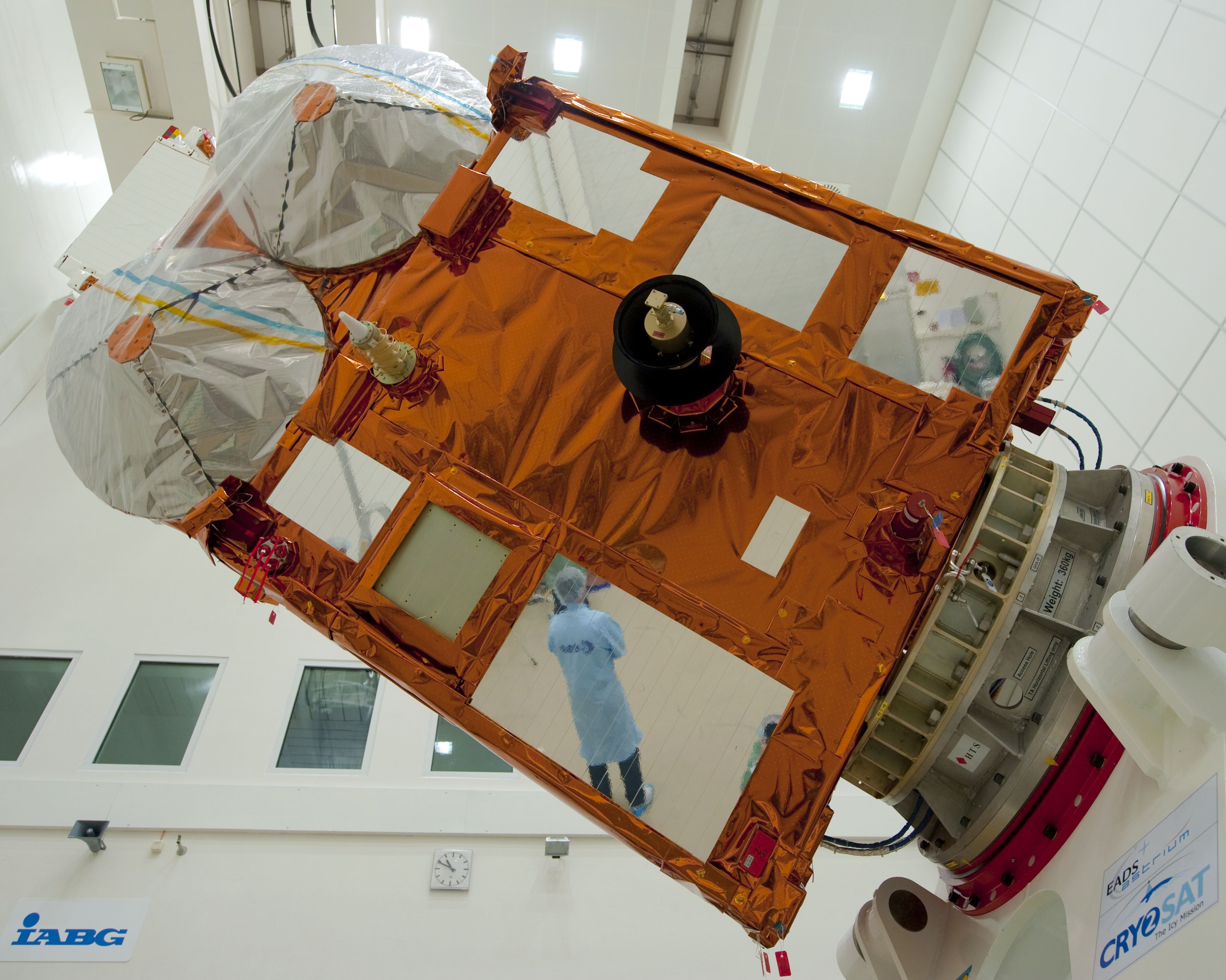
Cryosat-2
CryoSat-2 undergoing testing at the Space Test Centre at IABG
Please sign in to download.
CryoSat-2 undergoing testing at the Space Test Centre at IABG (Industrieanlagen-Betriebsgesellschaft mbH) in Ottobrunn, Germany in September 2009. CryoSat will be the third of ESA’s Earth Explorer satellites in orbit. The 700 kg CryoSat spacecraft – whose name comes from the Greek kryos meaning cold or ice – carries the first all-weather microwave radar altimeter. The instrument has been optimised for determining changes in the thickness of both floating sea ice, which can be up to several metres, and polar land ice sheets, which in Antarctica can be close to 5 km thick. The mission will deliver data on the rate of change of the ice thickness accurate to within one centimetre. Recent record-lows in the extent of summer Arctic sea-ice cover demonstrate that significant changes are occurring in the polar regions. While ice cover has been mapped from space for many years by satellites such as Envisat, there remains an urgent need to determine how ice thickness is changing. Data from the CryoSat mission will provide the scientific community with hard evidence on how the Earth's ice is changing and will lead to a better understanding of the role ice plays in climate and sea-level change.
